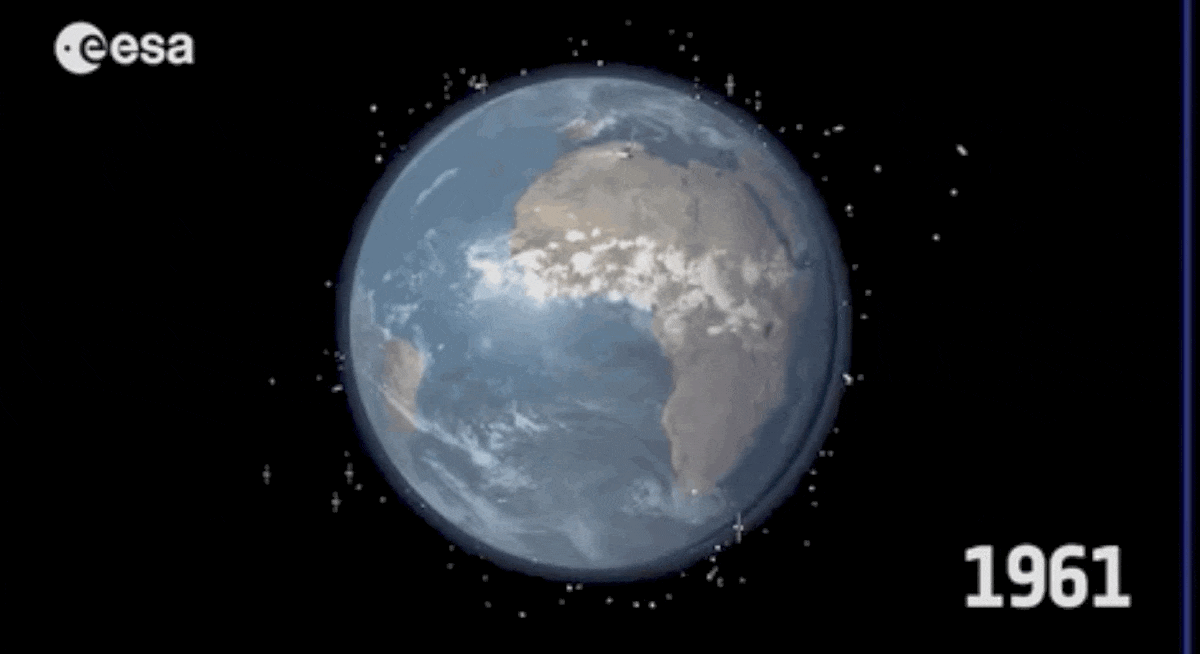The traffic in Earth's orbit is getting busier. In space, there are no road rules, and with the number of active satellites on track to increase exponentially in the coming years, experts are increasingly worried about the risk of collisions.
On Monday, the European Space Agency (ESA) was forced to move its observation satellite aside to make room for a SpaceX satellite in the Starlink constellation.
Generally speaking, collision manoeuvres aren't that uncommon - ESA did them 28 times last year - but typically these events are caused by uncontrollable satellites or dead fragments from previous collisions.
The Starlink satellite is active however, meaning it still receives signals from Earth. When the ESA contacted Starlink about the increasingly close approach last Wednesday, the company reportedly said they had no plans to move their satellite out of the way.
The agency's Earth observation satellite, Aeolus, had been in this region for 9 months, and Starlink 44 was a newcomer. As the days passed, the probability of collision continued to increase, and the space agency decided to take action.
According to the ESA, it's the first time one of its satellites has had to fire it thrusters to avoid a potential collision with a 'mega constellation' - a fleet of hundreds or thousands of spacecraft.
For the first time ever, ESA has performed a 'collision avoidance manoeuvre' to protect one of its satellites from colliding with a 'mega constellation'#SpaceTraffic pic.twitter.com/kmXvAgpj1U
— ESA Operations (@esaoperations) September 2, 2019
A statement from the space agency explains that at the time of the manoeuvre, the chances of collision were around 1 in 1000, 10 times higher than the threshold dictated by safety regulations.
SpaceX claims it had a bug in its on-call paging system that prevented officials from seeing this update, but if they had, they would have moved the satellite if necessary.
"This example shows that in the absence of traffic rules and communication protocols, collision avoidance depends entirely on the pragmatism of the operators involved," says Holger Krag, the head of space safety at ESA.
"Today, this negotiation is done through exchanging emails - an archaic process that is no longer viable as increasing numbers of satellites in space mean more space traffic."
 (ESA)
(ESA)SpaceX isn't the only company launching hundreds of new satellites into space, but it is the most ambitious. If successful, Starlink may one day be a fleet of 12,000 satellites, providing ultra-fast internet services worldwide. At the same time, companies like OneWeb and Kuiper are also launching major constellations in competition.
Today, there are over 5,000 objects orbiting Earth, and 2,000 of those are active. Experts on space debris at ESA are worried what these mega constellations might do to space traffic if no rules are implemented.
They argue that as the number of potential collisions rapidly increases, the ability to manage these events will require far more than human brain power. The manual system we currently use just won't be able to keep up with the sheer number of objects soon to be orbiting Earth.
"No one was at fault here, but this example does show the urgent need for proper space traffic management, with clear communication protocols and more automation," explains Krag.
"This is how air traffic control has worked for many decades, and now space operators need to get together to define automated manoeuvre coordination."
The ESA says it is now creating an automated collision avoidance system to weigh up the possibility of collisions and potential outcomes quicker than ever. But keeping peace on the 'streets' of Earth's orbit will require more than just that, they argue; it will also require cooperation.
"What I want is an organised way of doing space traffic. It must be clear when you have such a situation who has to react," Krag told Forbes.
"It cannot be when we have 10,000 satellites in space that there are operators writing the email what to do. This is not how I imagine modern spaceflight."
Join us on Facebook or Twitter for a regular update.
#Space | https://sciencespies.com/space/problems-predicted-from-satellite-fleets-like-spacexs-starlink-have-already-started/
No comments:
Post a Comment